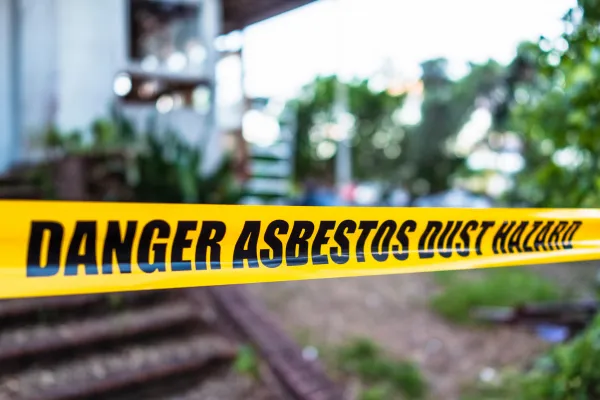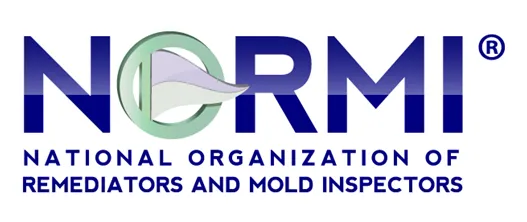
Navigating Asbestos: Unveiling the Facts and Safeguarding Health
What is Asbestos?
Asbestos, a naturally occurring mineral fiber in rocks and soil with versatile industrial applications, has long been embedded in our built environment. However, a closer look reveals a complex story of health risks and regulatory measures. In this comprehensive guide, we delve into the intricacies of asbestos, its health implications, and the essential steps for protection.
Where Is Asbestos Found?Owing to its robust fiber strength and resistance to heat, asbestos has been incorporated into numerous building construction materials to serve as insulation and a fire retardant. Additionally, asbestos has found application in various manufactured goods, predominantly in building materials such as roofing shingles, ceiling and floor tiles, paper products, and asbestos cement items. It is also present in friction products like automobile clutch, brake, and transmission parts, as well as in heat-resistant fabrics, packaging, gaskets, and coatings.
Possible locations of asbestos include:
Insulation in attics and walls, particularly those containing vermiculite
Vinyl floor tiles, as well as the backing on vinyl sheet flooring and associated adhesives
Roofing and siding shingles
Textured paint and patching compounds applied to walls and ceilings
Walls and floors surrounding wood-burning stoves, often protected with asbestos paper, millboard, or cement sheets
Pipes for hot water and steam that are either coated with asbestos material or wrapped in an asbestos blanket or tape
Furnaces powered by oil or coal, along with door gaskets featuring asbestos insulation
Fabrics designed to resist heat
Clutches and brakes in automobiles
How Are Individuals Exposed to Asbestos?
The release of asbestos fibers into the air can occur when asbestos-containing materials are disturbed during activities such as product use, demolition work, building or home maintenance, repair, and remodeling. Typically, exposure only takes place when the asbestos-containing material is disturbed or damaged, leading to the release of particles and fibers into the air.
Health Consequences of Asbestos ExposureBeing exposed to asbestos heightens the risk of developing lung disease, a risk further exacerbated by smoking. Generally, the extent of exposure to asbestos correlates with the likelihood of experiencing adverse health effects.
The manifestation of symptoms related to diseases resulting from asbestos exposure may take several years.
Identifying asbestos-related conditions can be challenging. Healthcare providers typically assess the potential for asbestos exposure and associated health issues, such as lung disease, through a comprehensive medical history that considers the individual's medical, work, cultural, and environmental background.
Upon suspecting an asbestos-related health condition, doctors employ various diagnostic tools, including a physical examination, chest x-rays, and pulmonary function tests. Referral to a specialist specializing in diseases caused by asbestos may also be recommended.
Three prominent health effects linked to asbestos exposure include:
Lung cancer
Mesothelioma—a rare cancer affecting the thin linings of the lungs, chest, abdomen, and heart
Asbestosis—a severe, progressive, non-cancerous lung disease with long-term implications.
Asbestos in Schools and Homes: Ensuring Safety First
Older buildings, including schools and homes, may harbor asbestos-containing materials. Asbestos testing becomes paramount for identifying potential risks and implementing necessary removal or management strategies.
Asbestos Abatement: Navigating the Safe Removal Process
Addressing asbestos risks requires meticulous planning and execution. Certified professionals specializing in asbestos abatement ensure safe removal, minimizing health risks and adhering to regulatory standards.
How to Identify Materials Potentially Containing AsbestosIn most cases, determining whether a material contains asbestos is not possible through visual inspection alone, unless it is explicitly labeled. If there's uncertainty, it is advisable to treat the material as if it contains asbestos and refrain from disturbing it. Consider having your home inspected by a qualified asbestos professional if:
You are planning a home remodel that may disturb building materials.
Your home has damaged building materials, such as deteriorating drywall and crumbling insulation.
For proper analysis, a trained and accredited asbestos professional should take samples. This is crucial because professionals are familiar with asbestos characteristics and handling procedures, minimizing the risk of fiber release. In fact, incorrect sampling can pose more hazards than leaving the material untouched. Conducting sampling without professional expertise is discouraged.
If the building materials in your home are undamaged and won't be disturbed, there's generally no need for asbestos testing. Materials in good condition that won't undergo disruption, such as during remodeling, are best left untouched.
You can hire a professional certified asbestos inspection here.
Managing Asbestos in Your Home: A Practical ApproachIf you suspect the presence of asbestos in your home, there's no need to panic.
Asbestos-containing materials that remain undamaged and undisturbed are generally not likely to pose a health risk. In most cases, the safest course of action is to leave asbestos-containing material alone, especially when it is in good condition.
Typically, asbestos-containing material in good condition and unlikely to be disturbed, such as during remodeling, tends not to release asbestos fibers.
However, asbestos-containing materials can release fibers when they undergo disturbance, damage, improper removal, repair, cutting, tearing, sanding, sawing, drilling, or scraping. It's important to monitor asbestos-containing materials and conduct visual checks over time for any signs of wear or damage.
If you suspect a material contains asbestos, refrain from touching it. Instead, look for indications of wear or damage, such as tears, abrasions, or water damage. Damaged materials have the potential to release asbestos fibers, especially if they are frequently disturbed by actions like hitting, rubbing, handling, or exposure to extreme vibration or airflow.
For slightly damaged asbestos-containing material, a prudent approach may involve limiting access to the area and avoiding any contact or disturbance. If the asbestos-containing material is more than slightly damaged or you plan to make changes in your home that might disturb it, seeking the expertise of a trained and accredited asbestos professional for repair or removal is crucial.
For reliable asbestos testing services, consider visiting AirQualityTesters.com to ensure the safety of your home environment.
Guidelines for Homeowners Regarding Asbestos
Do's:
Leave undamaged asbestos-containing materials undisturbed.
Minimize activities in areas with potentially damaged asbestos-containing material, especially restricting children's access to such materials.
Exercise caution to prevent any damage to asbestos-containing material.
Entrust removal and significant repairs to individuals trained and qualified in handling asbestos. It is highly recommended to have sampling and minor repairs conducted by trained and accredited asbestos professionals.
Don'ts:
Avoid dusting, sweeping, or vacuuming debris that may contain asbestos.
Refrain from sawing, sanding, scraping, or drilling holes in asbestos-containing materials.
Do not use abrasive pads or brushes on power strippers for wax removal from asbestos flooring. Never use a power stripper on flooring that may contain asbestos.
Resist the temptation to sand or level asbestos flooring or its backing. If replacement is necessary, install new floor covering over it whenever possible.
Prevent the tracking of materials that might contain asbestos throughout the house. If unavoidable, clean the area with a wet mop. For significant cleaning, especially in damaged areas, seek the assistance of an asbestos professional.
Addressing an Asbestos IssueIn instances where the asbestos-containing material exhibits more than slight damage or is susceptible to disturbance, trained and accredited asbestos professionals can undertake two primary actions: repair and removal.
Repair:
Repair typically involves either sealing or covering the asbestos material, ensuring it remains in place.
Sealing (Encapsulation): This process entails treating the material with a sealant that binds asbestos fibers together or coats the material to prevent fiber release. Professionals trained in safe asbestos handling should exclusively carry out this method, and it is suitable for certain applications like pipe, furnace, and boiler insulation.
Covering (Enclosure): This involves placing a protective wrap or jacket over or around the asbestos-containing material to contain fibers. Exposed insulated piping, for example, may be securely covered.
Removal:
Removal becomes necessary during remodeling or significant home alterations that would disturb asbestos-containing material.
Additionally, extensive damage to asbestos-containing material, beyond repair, may necessitate removal.
Removal is a meticulous process that demands the expertise of trained and accredited asbestos professionals. Incorrect removal may elevate the risk of asbestos fiber exposure to you and your family.
When dealing with an asbestos problem, it is crucial to rely on professionals who understand the complexities of the material and can execute safe and effective solutions.
Understanding Asbestos Professionals: Their Roles and Expertise
In general, there are two primary categories of certified asbestos professionals available for the management of asbestos-containing material:
Asbestos Inspectors:
These professionals conduct thorough inspections of homes or buildings, assess prevailing conditions, obtain samples of suspected materials for testing, and provide guidance on necessary corrections.
In instances where the decision is made to repair or remove asbestos materials, inspectors play a crucial role in ensuring that corrective-action contractors adhere to proper procedures, including thorough cleanup. They also monitor the air to guarantee there is no increase in asbestos fibers.
Asbestos Contractors:
Professionals in this category specialize in either repairing or removing asbestos materials.
While federal law does not mandate training and accreditation for individuals handling asbestos in detached single-family homes, certain states and localities enforce such requirements. To prioritize safety, homeowners should verify that the workers they hire to manage asbestos possess the necessary training and accreditation.
For the latest and most reliable listings of accredited professionals in your area, it is recommended to consult state agencies. Additionally, AirQualityTesters.com provides valuable resources for finding qualified asbestos inspectors.
Asbestos Resources: Empowering Informed Choices
For those seeking more information, a wealth of resources is available. From regulatory guidelines to safety measures, staying informed empowers individuals and organizations to make sound decisions regarding asbestos.
In conclusion, navigating the complexities of asbestos involves understanding its presence, acknowledging health risks, and actively participating in prevention efforts. By shedding light on these aspects, we contribute to a collective effort to create healthier, safer spaces for everyone. Stay informed, stay safe.
Learn more about air quality testing at AirQualityTesters.com. #AsbestosAwareness #HealthandSafety #EnvironmentalProtection






